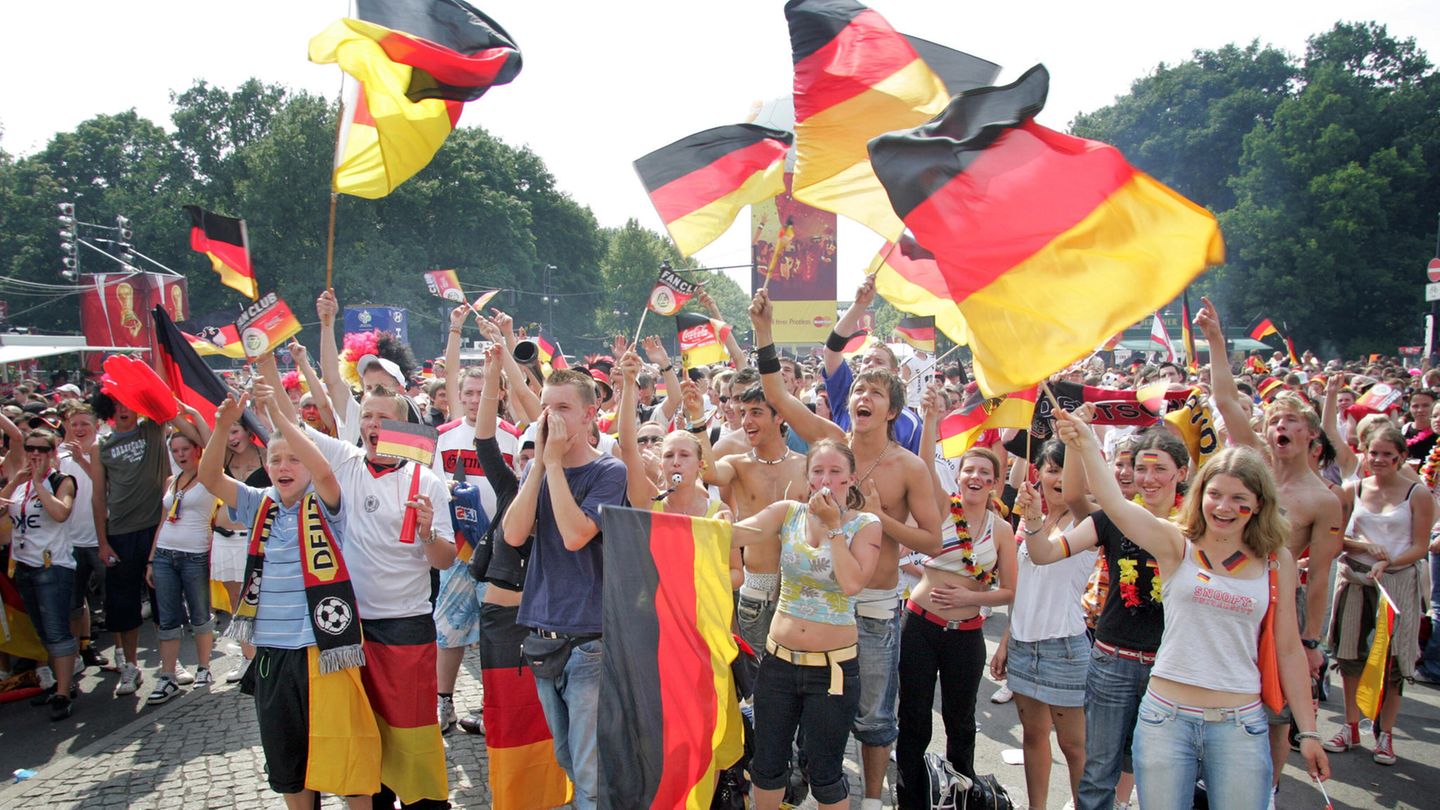When the European Football Championship begins, the national colors will be seen everywhere again. Just like in the summer of 2006. Will it be as carefree again? A balancing act between sport and national pride.
The best way to handle the German flag is to be relaxed. In other words: cool-headed, enlightened, perhaps even exuberant and jubilant. Preferably like in the summer fairytale of 2006, when a sea of black, red and gold dominated in front of the Brandenburg Gate and at other public viewing locations in this country during the World Cup.
“The Germans identify with their country and its national colors,” rejoiced the then-current Federal President Horst Köhler. “I think it’s good that I’m no longer the only one with a flag on my car.” In the supermarkets, you can now stock up on car mirror covers or make-up pencils in black, red and gold.
The crucial question: inclusive or exclusive use at the 2024 European Football Championship
A flag and its colors represent a social identity in which people feel they belong to a certain group. That was certainly the case in 2006. And today, in the year of the European Championships in 2024? Is the close contact with a piece of fabric that carries so much broken history, politics, prejudices and national pride at its core still so casual? “The crucial point is whether the national colors are used inclusively or exclusively,” says Julia Becker from the University of Osnabrück. The professor of social psychology deals with racism, discrimination and identity, among other things. “Inclusive means that people associate black, red and gold with variety and diversity. That would be a more relaxed approach.”
The scientist considers an exclusive, i.e. exclusionary approach to be more problematic. “If, for example, you rely on the ideas of the so-called German dominant culture or exclude migrants, then you can no longer speak of a relaxed approach, because it can clearly promote racism.”
It has never been easy with black, red and gold. Looking back to 2013: Even the then Chancellor Angela Merkel apparently couldn’t do much with the German flag in her CDU’s moment of triumph after winning the federal election. She took a flag from the hand of her blissful Secretary General Hermann Gröhe before he could strike a victory pose on stage. Since then, the short clip has been used not only by right-wing radicals to absurdly accuse the former head of government of having an anti-German attitude.
Flag includes historical and modern perspectives
Ultra-conservative and radical right-wing groups themselves have an ambivalent relationship to the national colors: some are currently wearing black, red and gold like a standard in their profile pictures under the slogan “Pride Month” in order to blatantly counter the rainbow flag of the queer movement in Pride Month June with national pride. Others, on the other hand, often wave upside-down German flags at right-wing extremist demonstrations. This probably means: Germany, yes, but not in its democratic, federal republican form.
“If people from the AfD, for example, use the flag, then that is clearly exclusive,” says scientist Becker. If you identify very strongly with Germany, that can turn into a bias against outsiders. “This danger always exists, even if people talk about a relaxed approach to the flag.”
The colors were once intended to symbolize unity: Black, red and gold have their origins in the liberal national movement of the 19th century to overcome small states on German soil. The original form of the tricolor is considered to be the black and red flag with golden fringes that was made in the spring of 1813 for the Lützow Free Corps, a combat unit during the wars of liberation against Napoleon.
The German tricolour stands for democracy
Over the course of the decades, black, red and gold repeatedly became the tricolor of the Germans: first briefly after the March Revolution of 1848, then later in the Weimar Republic (1919 – 1933) as a demarcation from the black, white and red of the defunct German Empire.
After the swastika flag during the Nazi era (1933 – 1945), both newly founded German states decided to go back to black, red and gold. At first their flags looked the same, but from 1959 onwards the East German flag showed the GDR state symbol of hammer, compass and wreath of ears of corn. Ultimately, German unity gave the three colours a new twist of unity.
And in 2024? “It will probably be the case that even people who are not particularly nationally proud will wear national flags at public viewings or paint black, red and gold on their faces,” says social psychologist Becker. Among them are certainly Germans with a migration history in the family. “If everyone around you does that, then it becomes a little normalized. No particular increase in racism would be expected among these people compared to those who identify very strongly with Germany.”
Source: Stern
I am Pierce Boyd, a driven and ambitious professional working in the news industry. I have been writing for 24 Hours Worlds for over five years, specializing in sports section coverage. During my tenure at the publication, I have built an impressive portfolio of articles that has earned me a reputation as an experienced journalist and content creator.




